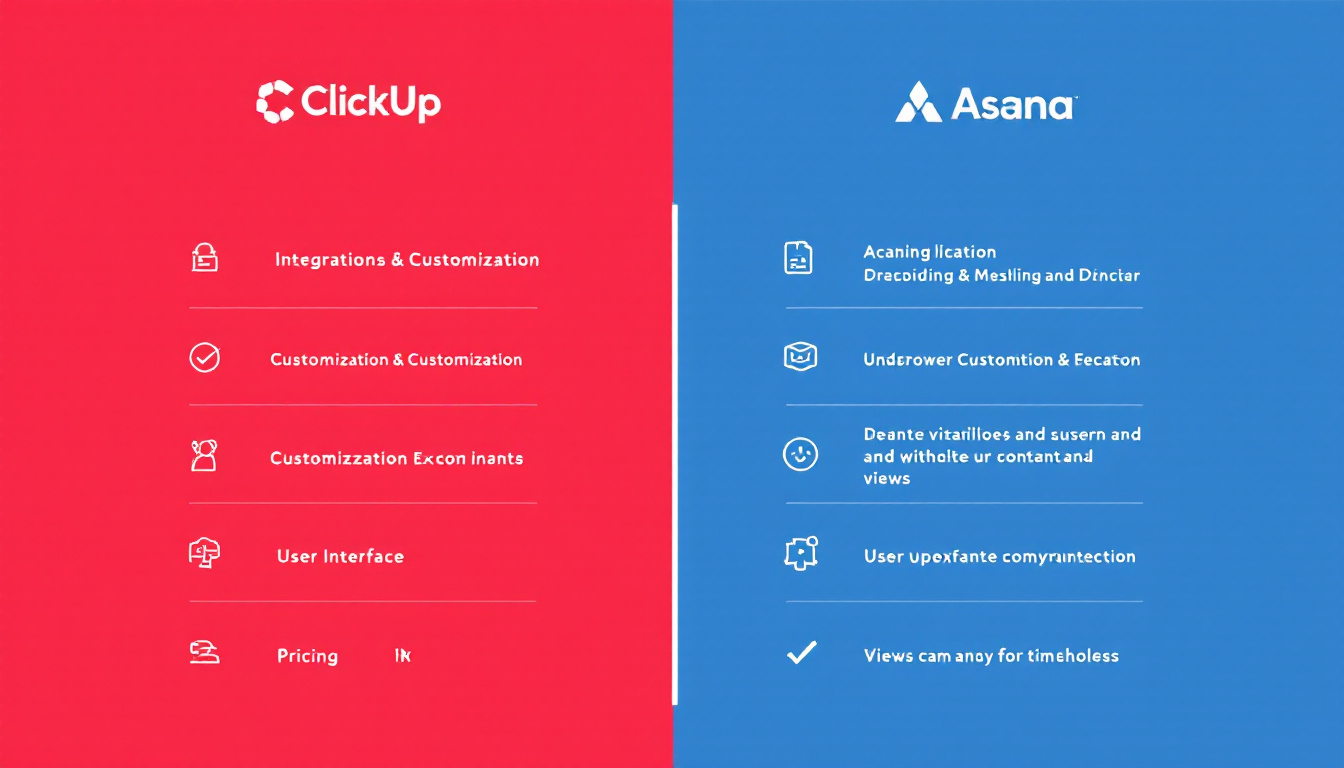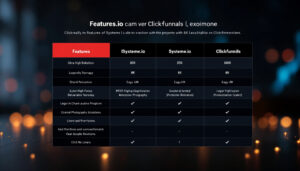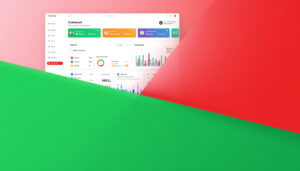Choosing the right project management software can make or break your team’s daily workflow. ClickUp keeps coming up in conversations among small businesses and agencies—and for good reason. More than 8 million users rely on ClickUp in 2025, giving it a boost as one of the fastest-growing project management tools this year.
With so many features for teams, small business owners often wonder about ClickUp pricing and which plan really fits their needs. Each option promises strong productivity tools, solid integrations, and flexible pricing models. This quick ClickUp review will break down the plans, cut through confusion, and help you find the best ClickUp plan for your business.
Overview of ClickUp: What Makes It Stand Out?
ClickUp gets regular praise in any ClickUp review for its rich set of project management features. Teams use it to manage tasks, plan campaigns, and track results—all in one place. For small businesses and agencies, ClickUp shines because it covers nearly every project need without forcing teams to patch things together with separate tools. If you’re comparing ClickUp vs Asana or other popular platforms, there are some key differences that keep ClickUp at the top for 2025.
Core ClickUp Features That Drive Results
ClickUp brings together the most-used project management tools under one roof. Some standout ClickUp features include:
- Fully Customizable Workspaces: Tailor your dashboard, tasks, views, and workflows so they match how your team works. Swap between list, board, or calendar views with one click.
- Advanced Task Management: Assign subtasks, set priorities and due dates, use automation, and keep everyone updated with clear notifications.
- Built-In Docs & Whiteboards: Take notes, brainstorm, and store docs right in the same tool, keeping ideas connected to your actual tasks.
- Goals & Progress Tracking: Set goals, measure outcomes, and see real-time progress for individuals or full teams.
- Time Tracking and Reporting: Track hours, manage workloads, and generate reports to see where time goes and how projects stack up.
Popular Use Cases for Small Businesses and Agencies
ClickUp for small business and agency teams means having flexibility. Some common ways teams use it are:
- Marketing Campaign Management: Coordinate campaigns, set deadlines, and align marketing and design teams.
- Client Project Tracking: Organize client work, create templates for repeat projects, and keep communication flowing.
- Content Production: Plan blog articles, videos, and social media, assigning each step to writers, editors, and designers.
- Operations Management: Handle internal tasks, such as HR onboarding or internal audits, all in one easy-view location.
Integrations That Save You Time
One of the top ClickUp features is how well it plays with your favorite apps. ClickUp integrations connect with tools you already use, giving you more reach without extra manual work. Some of the most popular integrations in 2025 include:
- Slack – for instant team updates
- Google Drive – for quick attachment access
- Zoom – for running meetings inside your project space
- GitHub and GitLab – for development teams tracking code changes
- Zapier – to automate connections with thousands of other apps
With more than 1,000 available ClickUp integrations, switching from other tools doesn’t slow you down.
ClickUp vs Asana: What Gives ClickUp an Edge?
ClickUp’s biggest advantage over alternatives like Asana is flexibility without extra costs. While both offer task tracking and team collaboration, ClickUp packs in:
- Unlimited Customization: More ways to shape workspaces for how your team operates.
- Native Document Storage: Fewer third-party add-ons needed.
- Deeper Automation: Advanced workflow rules included in even the mid-tier plans.
- Affordable Pricing: Lower cost for more power, which is key for small businesses watching expenses.
For many teams, ClickUp for teams just feels easier and more complete. It’s a single platform designed to grow with you, not hold you back.
If you’re looking for ClickUp alternatives, consider your need for customization, integrations, and pricing. But for most agencies and small business teams, ClickUp consistently lands at the top of any project management software shortlist.
Detailed Breakdown: ClickUp Pricing Plans Compared
Choosing the right ClickUp pricing plan can set your team up with the features and storage you need—without paying for extras you’ll never use. Let’s take a closer look at what each ClickUp plan offers, who it’s best for, and how they stack up for small businesses and agencies.
Free Plan: Best for Solopreneurs & Small Teams
ClickUp for small business doesn’t always mean paying upfront. The Free Forever plan offers a solid toolkit for solopreneurs, freelancers, and tiny teams testing the waters. Even though you won’t get every ClickUp feature, you get plenty to stay organized:
- Tasks & Dashboards: Manage endless tasks, projects, and lists with up to five custom views.
- Collaboration: Chat within tasks, add assigned comments, and share files.
- Integrations: Connect with Slack, Google Drive, and calendar tools.
- Docs & Whiteboards: Create unlimited docs and whiteboards for notes and planning.
- Time Tracking & Sprints: Light tracking features help you gauge effort and progress.
The biggest limitations in the free plan include:
- Storage: 100MB total, which will fill up if you attach lots of files.
- Reporting: Basic reporting and no advanced workload charts.
- Automations: Just 100 uses per month, which small teams might quickly reach.
Ideal Users: Solopreneurs, startups, and tiny teams who need project management without cost. If you’re evaluating ClickUp for small business workflows or juggling freelance work, start here before you grow.
Unlimited Plan: Growing Teams & Agencies
As your team grows, you need more room and power. The Unlimited plan beefs up collaboration, automation, and storage. This is the plan most small agencies and growing companies start with because it adds several team-friendly perks:
- Unlimited Storage: No need to worry about hitting upload limits.
- Advanced Reporting: Get real-time reporting dashboards and more custom widgets.
- Integrations: More API access and unlimited app connections.
- Collaborative Docs: Share and comment across the team without barriers.
- Guest Permissions: Invite outside contractors or clients with proper access.
- Automations: Use up to 1,000 automation actions each month.
How does it compare to Asana and Trello?
Both ClickUp and Asana offer strong collaboration, but ClickUp’s Unlimited plan unlocks more views and reporting at a lower monthly cost. Trello stays simple but lacks the reporting depth agencies require as clients and projects pile up.
Best For: Agencies, marketing firms, and expanding small businesses with more than five users. It’s the choice when collaboration, integrations, and storage start to matter for your practice.
Business & Business Plus Plans: Advanced Needs
Serious teams need advanced features. The Business and Business Plus plans add a safety net, deeper insights, and more control. Here’s what makes them stand out for larger agencies and mid-size businesses:
- Enhanced Security: Two-factor authentication, Google SSO, and detailed permissions keep client data safer.
- Advanced Automation: Up to 10,000 automation runs per month for complex workflows.
- Goal Tracking & Workload Management: See real-time workloads and advanced time reporting to keep projects on budget.
- Custom Reporting: Custom widgets and dashboards go deeper for project analytics.
- Team Sharing: Share entire task lists and folders with select teams for faster handoffs.
- Priority Support: Faster response times for troubleshooting.
Business Plus takes it one step further with:
- Custom Role Creation: Tailor permissions for each user or department.
- More Admin Controls: Granular controls for approvals, working time, and workload.
- Uptime & Training: On-demand training and higher uptime guarantees.
Who should upgrade? These plans suit larger agencies, tech firms, or any business ready to ramp up automation and oversight. If you handle sensitive projects or manage many users, these features justify the extra monthly cost.
Enterprise Plan: Large-Scale & Customization Focused
The Enterprise plan means no holding back. ClickUp unlocks all security, support, and customization options needed by the biggest agencies and complex businesses:
- White-Glove Support: Get a dedicated account manager and priority access for help.
- Advanced Security: Single Sign-On (SSO) with more providers, HIPAA compliance, and custom onboarding.
- Unlimited Custom Roles: Full control over what every user can see or do.
- Custom Contract & Uptime SLAs: Service level agreements (SLAs) with your unique needs written in.
- API Access & Advanced Permissions: Deeper integration with existing tools and strict data controls.
Agencies working with large enterprise clients, financial organizations, or health data benefit big from these perks. The Enterprise plan is built for teams that need peace of mind, dedicated support, and room to customize every piece of their ClickUp project management platform.
Choosing the right ClickUp pricing plan depends on team size, project needs, and how far you want to take your workflow. With these options, every business—from a solo side hustle to a nationwide agency—can find what fits.
Which ClickUp Plan Is Best for Your Business Needs?
Picking the right ClickUp plan isn’t just about price—it’s about matching features to your team’s size, workflow, and goals. Whether you’re a solo freelancer, a growing agency, or a team juggling many clients, the plan you choose will shape how you work every day. Let’s break down which ClickUp pricing tier actually supports your growth and avoids wasted spend.
Matching ClickUp Plans to Business Stages
Every business goes through phases. ClickUp for small business teams offers plenty of room to grow, but you want to avoid paying for extras you won’t use. Here’s how to know which plan matches your current stage:
- Just Starting or Running Solo: Stick with the Free plan. It has the basics for tracking tasks and simple projects without making you reach for your wallet.
- Small but Growing Teams (About 5-20 people): The Unlimited plan adds storage, more automations, and real-time reporting. At this level, features like integrations and advanced views become necessities, not luxuries.
- Midsize Agencies or Teams (20-100+ users): The Business or Business Plus plans unlock advanced permissions, workload management, and custom roles. These help when you’re juggling several clients or projects and need deeper controls and analytics.
- Enterprise-Level or Complex Needs: If your business focuses on compliance, custom security, or dedicated support, Enterprise is the clear choice. You’ll need this if clients demand advanced reporting or security guarantees.
Decision Matrix: What’s Best for Your Agency or Small Business?
To make your choice easier, look at this quick comparison matrix. It matches ClickUp features to team size and needs, with key areas highlighted for fast decisions:
| Plan | Best For | Team Size | Key Features | Growth Stage |
|---|---|---|---|---|
| Free Forever | Solopreneurs, Startups | 1-5 | Task mgmt, docs, 100MB storage, basic reporting | Pre-revenue, Testing |
| Unlimited | Growing Teams, Small Agencies | 5-20 | Unlimited storage, advanced reporting, more automations, guests | Building, Expanding |
| Business | Midsize Agencies, Departments | 20-100 | Advanced security, workload mgmt, custom dashboards, API access | Scaling, Managing Teams |
| Business Plus | Large, Multi-team Agencies | 50-200 | Custom roles, advanced admin controls, higher automations | Agency-wide Operations |
| Enterprise | Complex, Regulated Firms | 100+ | Custom security, SSO, white-glove support, SLAs | Compliance, Custom Needs |
Choose a plan based on where you are today—but also think ahead six to twelve months. If your team will double, an Unlimited or Business plan could save you from the hassle of switching later.
Pain Points and ClickUp Feature Fit
ClickUp project management isn’t “one size fits all.” Your biggest headaches—like lost tasks, lack of reporting, or slow onboarding—should guide which plan to pick. Here’s a fast framework:
- File Overload or Storage Worries?
Move past Free and choose Unlimited. - Clients Need Frequent Updates and Permissions?
Go for Business/Business Plus for advanced sharing and guest access. - Heavy Automation or Repetitive Workflows?
Business plans increase automation from 1,000 to 10,000 runs/month. - Must-Prove Security or Handle Sensitive Data?
Enterprise is made for compliance and peace of mind.
Ask your team what slows them down today. Then, map those pain points to features in the table above.
Forecasting Growth the Smart Way
No one likes switching project management platforms during busy months. For ClickUp for teams, plan for a bit more than your current headcount or needs. If marketing pushes are coming or you’re closing new clients, avoid the crunch by starting with a plan that handles your forecasted growth. Growth shouldn’t catch you by surprise.
- If you’re hiring, choose a plan that won’t run out of automations or storage before the end of the quarter.
- If you expect to land a few larger clients, look for Business or higher—those permissions and workload tools will save headaches.
- Want to experiment first? Start with Free, but set a reminder to review usage monthly.
Quick Prompts to Guide Your Choice
Before you make your pick, ask:
- How often will my team outgrow this plan?
- What features are mission critical for our biggest clients?
- Will automations or integrations lower our workload and save costs?
- Are we ready for advanced reporting now, or is basic tracking enough for the next few months?
Keeping these points in mind will lead you to the ClickUp plan that fits right—without paying for extras you don’t need or missing out on key features.
This simple, needs-based approach is honest, practical, and saves you from surprises as your agency or small business gets busier.
How ClickUp Pricing Stacks Up Against Alternatives
Budget is always top of mind for small businesses and agencies choosing project management tools, but value matters just as much. ClickUp tries to pull ahead by packing more features into each dollar, while its biggest rivals—Asana, Trello, and Monday.com—split their best tools across extra-cost plans. Here’s the real story on cost, features, and flexibility to help you see how ClickUp pricing truly compares.
ClickUp vs Asana: Which Delivers More for Your Money?
A common ClickUp review highlights how ClickUp packs a broader set of features in its lower and mid-tier plans, stretching your budget further than Asana does. Here’s how they stack up:
- ClickUp Pricing:
- Free, Unlimited, Business, Business Plus, and Enterprise plans
- Unlimited plan starts at a lower per-user price than Asana’s Premium
- All plans offer strong customization, document sharing, and automation
- Asana Pricing:
- Basic (Free), Premium, Business, and Enterprise
- Premium (paid) plan unlocks some automation and limited reporting
Pros for ClickUp:
- More automation actions on mid-tier plans
- Built-in docs, whiteboards, and time tracking from earlier tiers
- Deeper reporting and dashboard widgets in lower-priced plans
- Guest and client access, even for smaller teams
Cons for ClickUp:
- Can feel overwhelming with so many features
- Interface takes a bit longer to master
Pros for Asana:
- Very clean, easy-to-learn interface
- Built-in templates for common workflows
Cons for Asana:
- Must upgrade for advanced reporting and automation
- No built-in docs or whiteboards—you’ll add third-party tools
Best For:
- ClickUp for teams that want built-in docs, more automations, and quick scaling
- Asana for teams who prefer a simple, focused task management app
ClickUp vs Trello: Flexibility and Features for Agencies
Trello is well-known for its easy card-based boards, but it falls short on advanced features unless you pay for expensive add-ons.
- ClickUp Pricing:
- Cheaper Unlimited plan with more built-in tools (reporting, automation, custom roles)
- Trello Pricing:
- Free, Standard, Premium, and Enterprise plans
- Limited features in free/standard tiers
- Advanced automations and views require Premium
ClickUp Advantages:
- Built-in time tracking, workload charts, and team docs
- Customizable views (list, calendar, Gantt, Kanban) in every paid plan
- Better fit for agencies juggling projects and reporting
Trello Advantages:
- Incredibly simple and quick to start
- Drag-and-drop boards make learning easy
Trello Drawbacks:
- Reporting is minimal (even with some paid plans)
- Automations are only powerful on highest-cost plans
- Lacks built-in document storage or advanced permission settings
Who Should Choose Which?
- ClickUp for small business and agencies needing real reports or sharing with multiple clients
- Trello if the team only needs basic project boards and minimal reporting
ClickUp vs Monday.com: Which Offers More Value for Agencies?
Monday.com markets to agencies and growing businesses, focusing on lots of templates but often hiding key features behind steeper price tags.
- ClickUp Pricing:
- All core features in lower plans—advanced automations, customizations, guest permissions
- Monday.com Pricing:
- Individual, Basic, Standard, Pro, and Enterprise
- Automations, time tracking, and integrations are limited on lower-cost plans
Why ClickUp Wins for Value:
- Unlimited automations and integrations come in sooner
- More granular permissions for client work
- All-in-one docs, whiteboards, and dashboards
Why Monday.com Appeals:
- Colorful, intuitive layout
- Tons of ready-made templates
- Good notification system
Where Monday.com Falls Short:
- Need Pro plan or higher for advanced features (cost adds up fast for agencies)
- Time tracking and automation rules are capped on lower plans
- Limited guest access in cheaper plans
Summary for Agencies & Small Businesses:
- ClickUp is the better ClickUp alternative for teams that need flexible roles, permission controls, and automation without paying top dollar
- Monday.com is good for visual-first teams needing lots of templates, as long as they don’t mind upgrading for every robust feature
Quick Price and Feature Comparison: ClickUp vs Asana, Trello, Monday.com
Here’s a quick overview of how these tools line up on pricing and value for agencies and small businesses:
| Tool | Starting Paid Plan (per user/mo) | Automation in Paid Plan | Reporting | Docs/Built-in Notes | Guest Access |
|---|---|---|---|---|---|
| ClickUp | $7 (Unlimited) | Yes, up to 1,000+ | Advanced | Yes | Yes (all paid plans) |
| Asana | $10.99 (Premium) | Limited | Limited | No | Only higher plans |
| Trello | $5 (Standard), $10 (Premium) | Limited (in Premium) | Basic | No | Limited |
| Monday.com | $9 (Basic), $12 (Standard) | Very limited (Standard) | Okay | No | Only in higher plans |
Key Takeaways:
- ClickUp packs more features into its lower-priced plans than most direct rivals.
- Trello and Monday.com look affordable at first, but add-ons and upgrades add up fast.
- Asana is easiest to learn but often needs a pricey upgrade for automation and reporting.
For small businesses and agencies comparing ClickUp pricing with ClickUp alternatives, ClickUp often avoids extra fees and reduces the total software stack, making it a strong choice for anyone wanting simple, predictable pricing with advanced project management tools included.
Maximizing Value: Tips to Get the Most From Your ClickUp Subscription
Your ClickUp subscription is packed with tools for smoother projects, easier teamwork, and better results. But many agencies and small business teams only scratch the surface. By spending an hour up front to fine-tune your setup, you can avoid common time-wasters and get more out of every dollar you spend on ClickUp. These practical tips help you supercharge your ClickUp project management, use powerful integrations, and sidestep hidden pitfalls.
Customize Workspaces for Your Exact Workflow
ClickUp’s biggest strength is flexibility. Customizing your workspace means building a project hub that fits how your team actually works.
- Start by picking the right workspace structure. For agencies, try one Space for each client or key department.
- Use Lists and Folders to break down projects by campaign, product, or service.
- Choose default views like Board, List, or Calendar so team members always see what makes sense for their role.
- Set up custom statuses tailored to your process, not just generic “open” or “in progress.”
Spend a little time personalizing your dashboards for quick reporting. Create widgets that track overdue tasks, hours spent, or campaign progress. This makes weekly check-ins fast and painless.
Tap Into ClickUp Integrations to Connect Your Tools
ClickUp integrations help your team work faster and reduce manual entry. By linking ClickUp with the apps you’re already using, everything flows together.
Some of the best ClickUp integrations for small businesses and agencies include:
- Slack: Get instant task updates and reminders in chat.
- Google Drive: Attach and preview documents without leaving ClickUp.
- Zoom: Schedule or join meetings from a task.
- Zapier: Automate repetitive updates, like turning form submissions into tasks.
- GitHub/GitLab: Connect dev teams to project management for better launch planning.
Set up these ClickUp integrations early. Automate simple steps—like assigning a new lead to the right rep or updating a status when a file is approved. The time saved adds up quickly.
Use Automation to Save Hours Each Week
ClickUp’s built-in automations take care of the busy work so your team can focus on client results. Even in the Unlimited plan, you get up to 1,000 automation runs per month.
Start with these time-saving ideas:
- Move tasks to “In Review” or “Complete” automatically when a checklist is finished.
- Assign team members based on task type or client.
- Kick off onboarding tasks for new hires or clients with a click.
- Set automatic reminders for approaching due dates or when priorities change.
Begin with simple recipes and expand once your team gets the hang of it. ClickUp for teams shines when automations run quietly in the background.
Streamline Collaboration With Docs, Whiteboards, and Comments
Keep all project notes, files, and feedback in one place using ClickUp Docs and Whiteboards. Agencies can house creative briefs, strategy docs, and meeting notes right next to the tasks they affect.
Tips for smarter teamwork:
- Create templates for common docs like meeting agendas or client onboarding.
- Use comments and assigned comments to make feedback direct—no more lost emails.
- Organize Whiteboards for brainstorming and link them to related projects for context.
Cleaner communication means fewer meetings and less backtracking.
Avoid Common Pitfalls That Slow Teams Down
Most ClickUp headaches come from skipping setup or letting clutter pile up. Keep your workspace lean and useful by:
- Setting up regular cleanups. Archive or delete old tasks and projects every quarter.
- Reviewing your automation rules so they don’t overlap or trigger too often.
- Training new team members with short video walkthroughs or a written playbook.
- Avoiding too many custom fields or statuses—keep it simple so everyone knows what each step means.
Too much complexity makes ClickUp harder, not better. Stick to what your team needs.
Keep Improving as You Grow
ClickUp project management is never static. As your business changes, revisit your workspace settings, integrations, and automations to match new challenges.
- Meet with your team every month to ask what ClickUp feature or tool would make work easier.
- Try out new ClickUp integrations when you adopt fresh tools, like a new CRM or marketing platform.
- Review usage analytics to spot features your team isn’t using and decide if it’s time to downgrade or upgrade your plan.
ClickUp for small business and agencies should always match your workflow today, not just last year’s needs. Small tweaks keep your system working smoothly as you scale.
In short: With a bit of setup and consistent review, agencies and small teams can unlock serious value from every ClickUp subscription.
Conclusion
Choosing the right ClickUp pricing plan comes down to knowing your team’s size, industry quirks, and the workload you face. Small businesses and agencies need plans that don’t pile on hidden costs yet cover the must-have ClickUp features—solid automations, real reporting, and smooth ClickUp integrations for day-to-day work. Start simple on the Free or Unlimited plan, then upgrade as your workflow grows or projects get more complex.
ClickUp packs more value for the price than most alternatives, and it adapts easily when your business takes off. Get hands-on with a trial or read more ClickUp reviews to see what works best for your setup.
Thanks for reading—if you’ve found this ClickUp review helpful, share your thoughts below or give ClickUp a spin to see the difference for your agency or small business.




